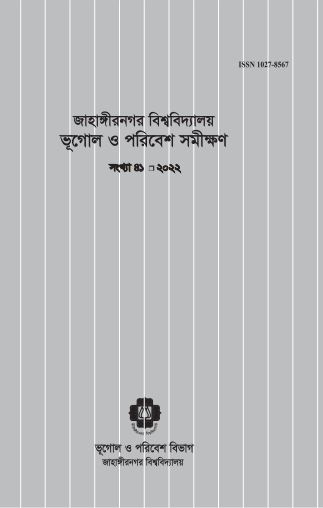জিআইএস এবং রিমোট সেন্সিং কৌশল ব্যবহার করে SDG লক্ষ্য এবং সূচক নিরূপন: সাভার উপজেলা ভিত্তিক একটি সমীক্ষা
Main Article Content
Abstract
Among the Sustainable Development Goals, SDG-11 calls for a variety of initiatives to build sustainable cities for cities and their communities. The main agenda of SDG-11 is to make cities and human settlements more inclusive, safe, resilient and sustainable. The main objective of this study is to map the road network and road density of the Bil Baghil Basin using GIS and remote sensing (mainly satellite images) in urban areas and assess the accessibility of public transport to the public for sustainable development goal 11 (SDG-11) to assess and map the current status in order to achieving SDG indicator 11.2.1. SDG Indicator 11.2.1 strives to provide safe, affordable, accessible, and sustainable transportation networks for all, increase road safety, notably through the growth of public transportation, and respond to the needs of women, children, people with disabilities, and the elderly in crisis situations. In order to ensure a sustainable transportation system it is important to determine route designs and density. Here a very high resolution (30 cm) satellite image called WorldView-03 along with Bangladesh Bureau of Statistics is used to determine the road network pattern of the study area. As the Bil Baghil basin is a fully urbanized area which has already rapidly changed into an urban area resulting maximum amount of agricultural land, water bodies, forests and open areas in the region have all decreased. According to the research findings, the study area has three types of road networks- katca, pucca and semi-pucca, of which semi-pucca roads are the most and pucca roads are the least. Some areas have high population density as well as dense road network but no bus stops for transport accessibility. The percentage of overall transport accessibility for the study area is 35.68% and the percentage of inaccessible area is 64.22%. The survey area has very few areas with high transport accessibility and the percentage of population with high transport accessibility is also very low. The study area has only 10 bus stops which did not cover the entire study area. For higher transport accessibility it is necessary to build more bus stops in the study area. Which will make this place more convenient for the movement of its residents.

